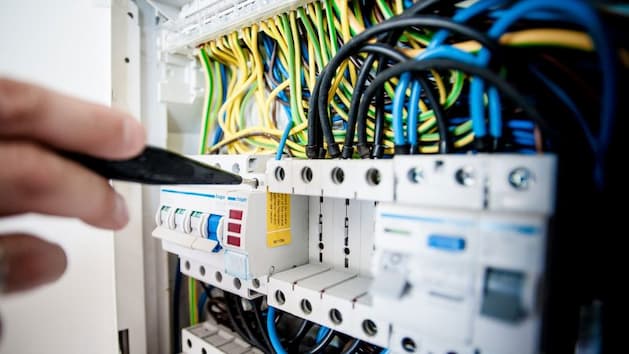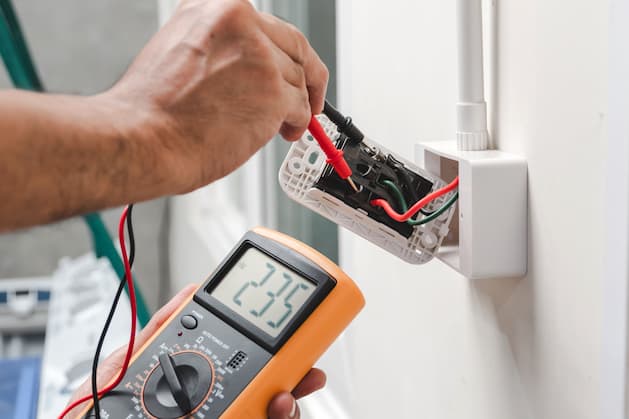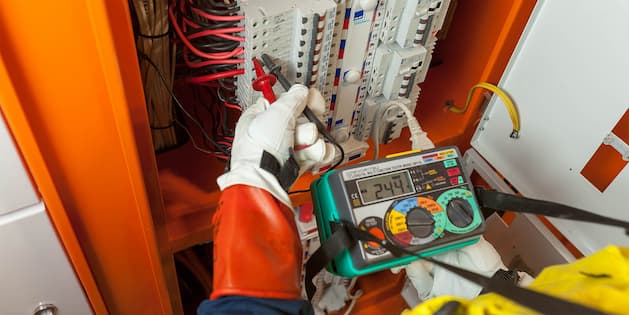RCDs offer a layer of personal protection that conventional circuit breakers and fuses can’t. RCD stands for residual current device, and it’s a safety switch preventing people from getting electrocuted. RCDs monitor the flow of electricity as it goes into your home or business from the main distribution panel. An imbalance or surge in electricity can result in injury or death, so if those circumstances are detected, the switch will cut off electricity automatically.
Installing RCD safety switches allows the circuits to be evenly divided, and will improve safety by 100% by preventing electrocution. RCDs are very sensitive to changes in electricity and will activate (shut the power down) in a manner of milliseconds. There are different types of RCDs available – fixed, socket-outlet, and portable.
Types of Residual Current Devices
Fixed Residual Current Devices

Fixed residual current devices are installed in the fuse box, and provide protection to one or multiple circuits. A fixed RCD will provide the most protection as it protects all the sockets and wiring on a circuit, as well as any device connected to them.
Socket-Outlet Residual Current Devices
As their name implies, socket-outlet RCDs are socket outlets with a built-in RCD that can be used instead of a standard socket outlet. These RCDs offer protection only to the person using the equipment, including the lead that’s plugged into them.
Portable Residual Current Devices

You can plug these RCDs into any standard socket outlet. Then, you can plug an appliance into them. They’re useful when other RCDs aren’t viable. Similarly to socket-outlet RCDs, they provide only protection for those using the equipment that’s plugged into the RCD. Similarly, you plug them into a fixed socket and can use them to monitor appliances in risky areas such as workshops, damp, and outdoor areas.
Testing RCDs

There are RCD regulations that businesses need at least two RCDs connected to the switchboard. However, the regulations can vary based on the size of the building and the current going to each and every section. If your business doesn’t follow the regulations, you’ll be subjected to hefty fines. Additionally, you have to use specialised RCD testers to ensure the proper function of the RCDs.
As aforementioned, fixed residual devices provide the most protection, and are considered at least 97% reliable. This number goes up if you test them with an RCD tester. RCD testers can be costly, but they give invaluable peace of mind knowing your home or business is protected against the risk of fire, and everyone using the outlets and devices inside is protected from electrocution and injury.
Ideally, you should test RCDs every three months in businesses, and at least once a year in residential settings. Performing the test is relatively straightforward – all you have to do is press a button and the device will determine whether the switch is operating properly. If the switch operates properly, the power will go off. If it doesn’t, you should call an electrician asap to re-test it, repair it, or replace it.
It’s recommended for every building with electricity to have the RCD installer properly for safety. The cost of installing one is nominal compared to the damage it can cause, and the fines you will expose yourself to. In order to be compliant with the standard, you’ll need to comply with the above test intervals I just mentioned.
The residual device should disconnect within 40 milliseconds at 5 times the current it’s rated for. This is done by a professional electrician using an RCD tester. It’s a test performed during a regular electrical inspection, and it confirms whether the RCD disconnects in time to prevent shock. There are also tests that confirm the RCD isn’t oversensitive so it would disconnect the power unnecessarily.
If you’re unsure about when the RCDs in your business or home has been tested, test them right away to have peace of mind. When tested, the RCD will be tripped, disconnecting the circuit it protects, so any electrical appliance should be turned off before RCD testing is performed to avoid damaging the appliance.
Tests take about 5 minutes for each RCD when carried out by a professional. A professional is someone who’s been instructed on how to use the push-button test. For some tests, it may be necessary to gain access to the supply distribution switchboard, in which case only a licensed electrician can perform the test.
Conclusion
RCDs give peace of mind knowing that in case of an electrical mishap, you and your property will remain safe and sound. Testing your RCDs regularly will give you peace of mind knowing your RCDs will do their jobs when they need to. That being said, both these things are important aspects of your safety, and should not be neglected, no matter how “busy” we get. They’re small, affordable investments that will pay themselves out over the long term


